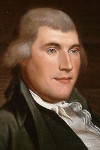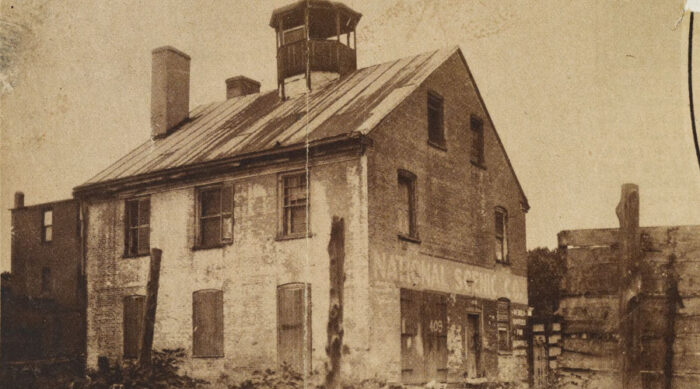
Tunnicliff’s Tavern is a popular Hill watering hole that has been a local favorite since the early 1980s. Its name, however, has a much longer history reaching back to before Washington was the capital of the country. From the mid 1790s, during a ten-year period, a man named William Tunnicliff ran taverns that were important meeting places on what developed, during that time, as Capitol Hill.
A major question that Hill historians continue to wrestle with until today is why Washington developed primarily to the west of the Capitol rather than the east. After all, Pierre L’Enfant had thought that the major area of development would grow in that direction, with federal buildings lining East Capitol Street from the Capitol to what is now Lincoln Park. Instead, although some development took place around the Capitol (and, of course, near the Navy Yard), most of early DC was built west of the Capitol. One reason that has been suggested is that the early speculators who owned much of the land of Capitol Hill were expecting huge returns on their investments, returns that went unrealized as those who actually built the federal city found cheaper land elsewhere. There is no doubt that a number of these speculators went broke betting on the new capital city.

One of these speculators was John Nicholson. He and his fellow speculators owned a large percentage of the land in the District, and Nicholson hired Lewis DeBlois to build a tavern on one piece, which was located on Pennsylvania Avenue SE between 8th and 9th Streets in 1795. DeBlois managed to get the establishment, named the Eastern Branch Hotel, running, but found himself at permanent odds with Nicholson and soon quit. Nicholson hired William Tunnicliff to take over, expressing his displeasure at how poorly Tunnicliff’s predecessor had kept him informed about the day-to-day operation of the business. Tunnicliff therefore spent much of his time writing letters to his boss:
February 26 [1797] – Sunday, Consulted with P. Miller abt. the quantity of bread your Workmen would take pr. Week, we find upon the lowest calculation to amt. to 50 Dollr. pr. week! this sum must consequently be reimbursed to the Baker at least every fortnight, his funds you know will not admit of any longer delay & to stop this supply would be cruel indeed, the last stoppage was severely felt by many, for on the Monday after you left the Baker found the familys waiting. Tea things set & ready to begin their Breakfast’s when lo their was no bread to be had as usual, with Tears & the most pitious requests both Husband, Wife & Children all have joined in begging for bread, how can this be denied and how can I proceed long in this supply without I hear from you to effect it.
Regardless of all these difficulties, there is no doubt that the hotel was quite successful, as its location was excellent. Pennsylvania Avenue led from Eastern Branch Ferry to the building site of the US Capitol, and it was at the Eastern Branch Hotel that the Washington Dancing Assembly was held in 1796, which was the first time a ball of this nature was held in the new city.
Tunnicliff only stayed at this location for about five years, moving closer to the Capitol and to a new hotel just as the US government was completing its move to the new capital. The building itself survived for another 130 years, being used as a residence, a beer garden, for storage, and finally as a gas station before being torn down in 1931. On its site now Distad’s Service Station.
Next week, the story continues with Tunnicliff’s second tavern.
(This is a rerun from many years ago, whose images were lost in one of our migrations. Since it’s a topic that is always of interest, it seemed reasonable to bring back during the summer doldrums)
